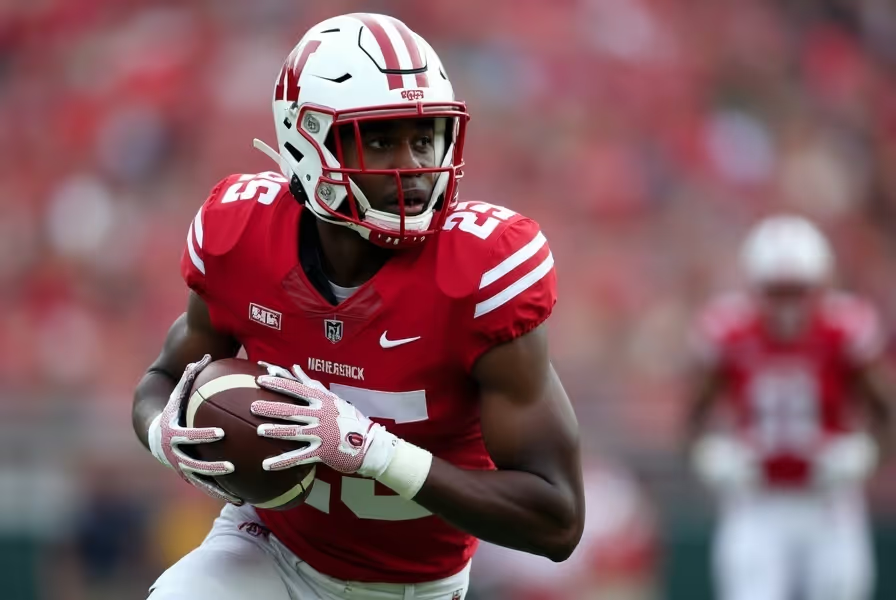Breaking Down the UTEP vs Nebraska Football Player Stats
The clash between UTEP Miners and Nebraska Cornhuskers offered plenty of action and standout performances. Whether you're a fan, a scout, or just tracking NCAA football statistics, this game shed light on key players and metrics. Here's a deep dive into the player stats from this exciting matchup.
Quarterback Comparison: Key Stats and Impact
The quarterback position always plays a defining role in college football games. In the UTEP vs Nebraska face-off, both quarterbacks showcased their strengths, though results varied significantly.
Nebraska Cornhuskers Quarterback
- Completions/Attempts: 19/28
- Passing Yards: 246 yards
- Touchdowns: 2
- Interceptions: 1
- Rushing Yards: 32 yards
Nebraska’s QB demonstrated composure under pressure and complemented the passing game with effective mobility. His leadership was a critical factor in sustaining offensive momentum.
UTEP Miners Quarterback
- Completions/Attempts: 17/35
- Passing Yards: 198 yards
- Touchdowns: 1
- Interceptions: 2
- Rushing Yards: 15 yards
UTEP’s QB struggled with accuracy and decision-making. However, several plays still showed flashes of potential, especially when targeting middle-range routes.
Top Running Backs: Ground Game Analysis
Strong running backs provide rhythm and control. Both teams leaned on their ground attacks at key moments in the game.
Leading Nebraska Running Backs
- RB1: 18 carries, 107 yards, 1 TD
- RB2: 9 carries, 42 yards
Nebraska used a committee approach, led by a powerful workhorse who crossed the 100-yard mark. Time of possession was critical, and this unit delivered consistently.
Leading UTEP Running Backs
- RB1: 14 carries, 66 yards
- RB2: 7 carries, 28 yards
UTEP's running backs showed bursts of speed but struggled due to Nebraska’s strong defensive line. Explosive runs were limited but not absent.
Wide Receiver and Tight End Performance
Receiving stats often determine how dynamic an offense can be. In this game, receivers from both sides made key contributions.
Nebraska Receivers
- WR1: 7 receptions, 95 yards, 1 TD
- WR2: 4 receptions, 66 yards
- TE1: 3 receptions, 38 yards
Speed and route-running allowed Nebraska receivers to consistently create separation. Timing with the quarterback was optimal and helped move the chains effectively.
UTEP Receivers
- WR1: 6 receptions, 81 yards
- WR2: 3 receptions, 52 yards
- TE1: 2 receptions, 18 yards, 1 TD
UTEP’s receiving unit had a solid showing despite limited possession. The tight end was particularly valuable in short-yardage and red zone situations.
Defensive Standouts and Key Tacklers
Defense wins championships, and this game showed why. Let’s highlight top defenders from both programs.
Nebraska Defensive Leaders
- LB1: 9 tackles, 1 sack, 1 forced fumble
- CB1: 1 interception, 3 pass breakups
- DE1: 2 sacks, 5 QB pressures
Nebraska’s defense applied consistent pressure and created turnovers. Their pass rush and secondary stood out during crucial moments.
UTEP Defensive Leaders
- LB1: 10 tackles, 2 tackles for loss
- S1: 7 tackles, 1 interception
- CB1: 2 pass breakups
Despite the loss, UTEP’s defense held strong in several drives. The linebacker group tackled well in open space and prevented larger gains.
Special Teams Contributions
Special teams can swing momentum in any NCAA football game. Here are the most impactful performers in this area.
- Nebraska Kicker: 2/2 field goals, long of 41 yards
- Nebraska Punter: 4 punts, 44.3 average
- UTEP Kicker: 1/1 field goals
- UTEP Kick Returner: 3 returns, 78 yards
Nebraska's specialists maintained strong field position throughout the game. UTEP’s return game gave occasional sparks, helping them start near midfield on a few drives.
FAQ: UTEP vs Nebraska Football Stats and Insights
Who had the best performance in the UTEP vs Nebraska game?
Nebraska’s quarterback and running back delivered dominant performances. Their ability to convert third downs and control game tempo made a major impact.
Which defense stood out more in this NCAA football matchup?
Nebraska’s defense consistently disrupted UTEP’s passing game. Their pass rush and secondary played at a high level, leading to multiple turnovers and sacks.
How did special teams affect the outcome?
Field position was key. Nebraska’s kicker and punter kept UTEP in longer field positions, limiting scoring chances. Solid execution in special teams supported Nebraska’s overall strategy.
What This Game Tells You About Both Programs
This matchup revealed where each program stands in their development journey. Nebraska football showed why it remains a strong force in the Big Ten landscape. On the other hand, UTEP football displayed effort, but the young roster showed areas needing growth.
As a fan or analyst, reviewing these player stats can guide season-long expectations. It also highlights emerging talent worth watching in future NCAA football games.
Key Takeaways from the UTEP vs Nebraska Football Game
- Nebraska’s offense balanced pass and run well
- UTEP showed resilience and potential in spurts
- Individual performances highlighted future stars
- Turnovers and time of possession were key differences
Stay tuned for more football match breakdowns, in-depth player stats, and game-day analysis throughout the NCAA season. Each game writes a new chapter—and this one revealed much about team strategy and individual talent.











.svg)



